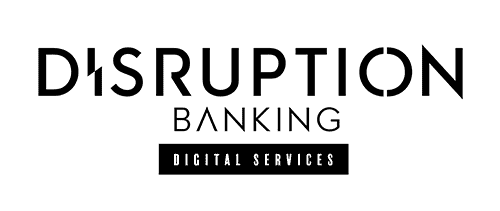Complex debt products like Collateralized Loan Obligations (CLOs) and private credit structures are having their moment in 2024. These financial instruments promise big returns, drawing investors eager to pile in. But their rapid growth is raising concerns about financial stability, especially in less regulated markets.
The CLO market has shattered records this year. By November, total issuance hit $191 billion, surpassing the previous high of $187 billion from 2021. CLOs package corporate loans into securities for investors, offering varied levels of risk and return. This structure is attractive because it spreads out risk, but it doesn’t eliminate it.
In 2024, CLOs maintained significant exposure to lower-rated loans. For instance, U.S. BSL CLOs had about 25.2% exposure to ‘B-‘ and ‘CCC’ rated loans, while MM CLOs had even higher exposures, with approximately 72.4% in the ‘B-‘ category and 15.3% in the ‘CCC’ range, making them more prone to defaults if the economy slows. A good example is the retail sector, where defaults in early 2023 caused CLO values tied to retail firms to drop. According to Fitch Ratings, Market Concern Loans in the retail sector increased, reflecting the heightened risk.
The collapse of corporate spreads to record or near-record lows reminds me of the time when the previous consensus that negative 50 or even 100-year interest rates were a normal market phenomenon.
— Otavio (Tavi) Costa (@TaviCosta) November 7, 2024
Just a few years ago, many experts were arguing that lenders accepting payment to… pic.twitter.com/WBFIE92H9j
Interest rates are another challenge. With U.S. rates remaining at or above 5% for most of 2024, companies with floating-rate loans faced increased repayment costs, heightening financial pressures and default risks. Bloomberg analysts have warned about the potential for increased downgrades and defaults among leveraged borrowers, which could adversely affect CLO portfolios.
“As we think about further cuts, we’re going to be looking for progress on inflation. We have been moving sideways on 12-month inflation,” Fed Chair Jerome Powell told a news conference after the two-day meeting. “As we go forward, we’re going to want to be seeing further progress on bringing inflation down, and keeping a solid labor market.”
Even with these risks, CLOs remain popular. Pension funds and hedge funds see them as stable, high-yield options in a market filled with uncertainties. But their complexity can be a double-edged sword. It’s easy for investors to overlook hidden risks in the fine print.
Private Credit: A Booming But Risky Market
Private credit markets have experienced significant growth. As of April this year, the market exceeded $2 trillion in global assets and committed capital. Projections indicate that assets under management could reach $2.8 trillion by 2028. Unlike traditional loans, private credit deals typically operate with less regulatory oversight. The International Monetary Fund has emphasized the importance of adopting a more vigilant regulatory and supervisory approach to monitor and assess risks in this expanding market.
Investors are drawn in by the returns. Private credit strategies have historically delivered net IRRs (Internal Rate of Return), averaging around 8% over recent five-year periods, with higher-risk strategies achieving higher returns. High-quality private credit funds have the potential to produce gross IRRs in the range of 14-15%, primarily through quarterly cash distributions. However, the high returns come with challenges. Overall payment defaults in the private credit market have remained relatively low, with a general default rate of 0.5% on a trailing-12-month basis at the end of the first quarter of 2024.
Private credit is especially appealing in areas traditional banks avoid. For instance, tech startups and real estate ventures have increasingly turned to private lenders, with private credit playing a major role in financing these sectors. In India’s renewable energy sector, investments are expected to increase by 83% to $16.5 billion in 2024, contributing to rapid growth in solar and wind projects.
“India is likely to witness 25 GW of renewable energy capacity addition entailing an investment of Rs 1,37,500 crore (about $ 16.5 billion) in 2024 calendar year, which would be higher than 13.5 GW with an investment of Rs 74,250 crore (nearly $ 9 billion) seen in 2023,” commented Union Power and New & Renewable Energy Minister R. K. Singh in an interview.
BlackRock, the world’s largest asset manager with over $11 trillion in assets, is eyeing a new frontier — #India’s growing private credit market.https://t.co/0KxSokwAcD
— #DisruptionBanking (@DisruptionBank) October 28, 2024
Yet, transparency remains a weak point. Many private credit deals aren’t regularly valued, making it hard for investors to know their true worth. The IMF flagged this in an April 2024 Global Financial Stability Report, warning that opaque valuations could lead to overestimations in portfolio value.
Liquidity is another concern. Private credit instruments are harder to sell than public securities. According to industry insights, it can take considerably longer to sell private credit assets compared to public securities, with some estimates suggesting an average of 70 days in recent years, up from 45 days in 2019. This illiquidity can create serious challenges during financial downturns.
Hidden Risks That Could Trigger Financial Turmoil
The rapid growth of complex debt products brings risks that aren’t always obvious. One significant concern is the credit quality of the underlying loans. S&P Global Ratings reported that the proportion of ‘CCC’ rated loans in U.S. broadly syndicated loan (BSL) CLO portfolios increased from approximately 4.56% in February 2023 to 7.41% by December 2023, indicating a decline in credit quality over the period. That’s a red flag for potential defaults.
HSBC is assembling a team of bankers to connect its corporate clients with the rapidly expanding world of private #credit. #bankinghttps://t.co/God9znI2M2
— #DisruptionBanking (@DisruptionBank) October 12, 2023
Leverage is another issue. While average net leverage levels in private credit deals have declined from over 6x EBITDA (Earnings Before Interest, Taxes, Depreciation, and Amortization) in 2021 to approximately 4.7x in 2023, certain transactions still exhibit higher leverage ratios. The IMF recently warned that this kind of borrowing could become a ticking time bomb if economic growth slows.
In less regulated markets, the risks are even greater. A World Bank report from this year highlighted that private credit investments in emerging markets lack enforceable protections. This makes defaults more likely and harder to manage.
Liquidity remains a recurring problem. When markets become volatile, finding buyers for these complex products is nearly impossible. Turkey has experienced liquidity challenges in recent years, impacting its banking sector and foreign exchange reserves. For instance, in 2022, Turkish banks faced a liquidity crunch as investors shied away, leading to increased funding costs and concerns over foreign currency reserves. It’s a pointer to the challenges in this space.
"Year to date, the Turkish Central Bank’s underlying FX position has deteriorated by US$29.3bn, undoing almost all of the improvement made from the trough in May 2023 until year-end. The depletion of reserves is driven by capital outflows, which are mostly by locals." – Goldman
— zerohedge (@zerohedge) March 21, 2024
Systemic Vulnerabilities and Their Global Impacts
The interconnected nature of financial markets means that risks in complex debt products can ripple outwards. CLOs and private credit instruments are widely held by banks, hedge funds, and insurers, creating a web of potential vulnerabilities.
Emerging markets face their own unique challenges. Many private credit deals in these regions are denominated in U.S. dollars. For instance, in March 2024, Argentina’s government initiated a debt exchange involving US$55.3 billion in maturing debt instruments, an action deemed a distressed exchange equivalent to default. This underscores the financial vulnerabilities linked to currency mismatches in these economies.
Harry Clynch of Disruption Banking recently reported that Argentine president Javier Milei’s approach to the economic woes of Argentina have won him admirers in high places, highlighting that “monthly inflation is now down to 2.7%, compared to 25.5% when Milei took office in December last year, easing cost of living pressures on Argentinians.”
Milei’s approach to #Argentina’s economic ills has won him admirers in high places, not least the incoming US president Donald Trump – it is no coincidence that Milei was the first foreign leader to meet Trump after his election victory in November.https://t.co/v1AhSHbfzu
— #DisruptionBanking (@DisruptionBank) December 17, 2024
Transparency — or the lack of it — remains a critical weakness. Investors often rely on outdated or incomplete data. The IMF’s April 2024 Global Financial Stability Report highlights that the rapid growth and opacity of private credit markets increase the risk of sudden market shocks, potentially destabilizing the broader economy. To address these concerns, the IMF recommends enhancing transparency and regulatory oversight in these markets.
Despite the risks, complex debt products aren’t going away. They play an important role in modern finance, providing capital to businesses that might otherwise struggle to secure funding. This is especially true in high-growth areas like renewable energy and infrastructure.
However, better regulation is needed. Transparency standards must improve, and regular valuations should become the norm. Earlier this year, the European Central Bank proposed rules requiring private credit firms to disclose loan performance every quarter. Measures like this could make a big difference.
JUST IN – European Central Bank asks some lenders to monitor social media for early signs of bank runs — Reuters
— Disclose.tv (@disclosetv) January 24, 2024
The rise of complex debt products in 2024 highlights both the opportunities and challenges in modern finance. While these instruments offer impressive returns, they also bring significant risks. U.S. CLO issuance has reached a record $192.5 billion, and the private credit market has expanded to approximately $1.5 trillion, with projections estimating growth to $2.8 trillion by 2028.
While these developments present lucrative opportunities, they also introduce wanton risks, including liquidity problems and potential systemic vulnerabilities. Striking a balance between fostering innovation and ensuring financial stability remains a critical imperative.
As the financial landscape evolves, regulators, investors, and institutions must work together to mitigate risks. The goal is simple: to build a system that supports growth while remaining resilient in the face of uncertainty. Without these safeguards, the very tools driving today’s growth could become tomorrow’s greatest threat.
Author: Richardson Chinonyerem
#Debt #CLOs #PrivateCredit #Banking















